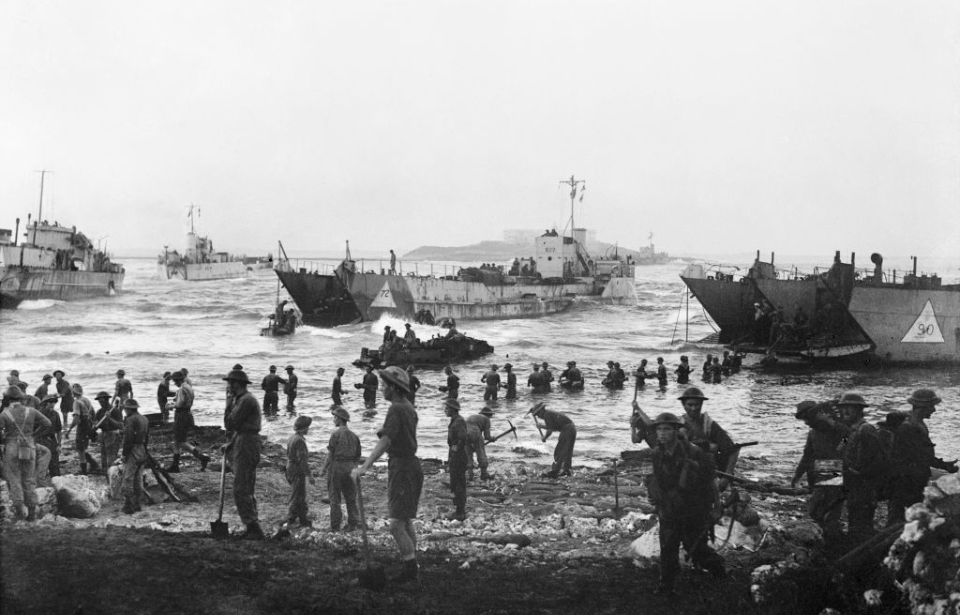In the years since the Second World War, many documents have been released, detailing the covert operations undertaken by the UK’s Special Operations Executive (SOE), America’s Office of Strategic Services (OSS) and various military intelligence agencies. One of these operations could have come right out of a spy novel, if not for its ingenuity, then for its absurdity.
Including a fake identity, counterfeit documents and a dead body, Operation Mincemeat is considered by many to be one of the most successful wartime deceptions ever achieved.
Organizing tactical deception
In advance of the Allied invasion of Sicily, British Intelligence embarked on a mission to deceive the Germans as to what their true target was. The operation was organized by Ewen Montagu, from the Naval Intelligence Division, and the MI5‘s Charles Cholmondeley.
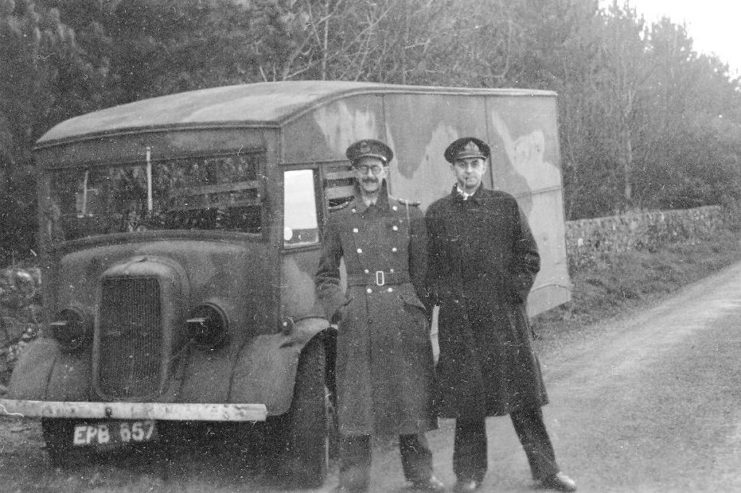
To throw off the Germans, they concocted a plan to have the body of a dead Royal Marine wash up on the Spanish coast. It wouldn’t be a real Marine, of course, but an individual they’d given fake documents, in the hope that the information would be passed on to German Intelligence.
The man who never was
The first stage of the operation required creating a false identity that would be associated with the body. A coroner in London, Bentley Purchase, was told to keep an eye out for a corpse with injuries that could pass for those sustained from falling from an aircraft with a failed parachute. The body of a homeless worker who’d died from eating rat poison eventually came across his slab.
According to Montagu’s account of the operation, they were given permission to use the body for Operation Mincemeat, so long as the man’s identity was never released to the public. It was kept secret until 1996, when his name was discovered in files from the Public Record Office, stating he’d been a Welshman named Glyndwr Michael.
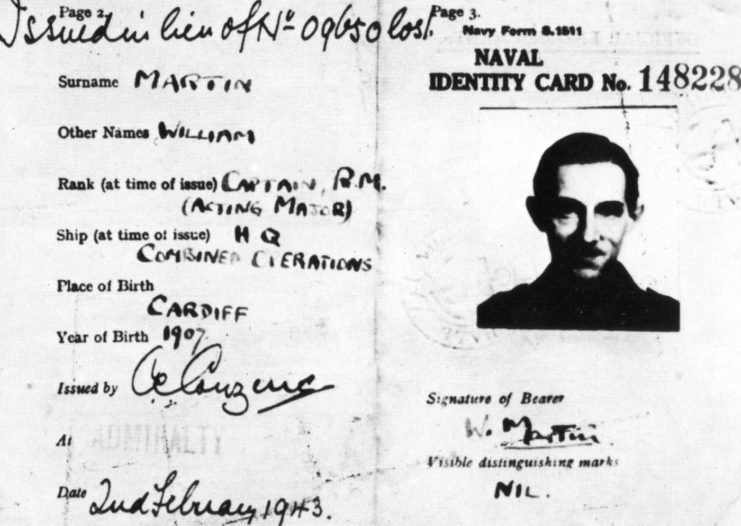
Michael was transformed into Capt. William Martin of the Royal Marines. He was dressed in the uniform of a British officer and a fake identity card was created, with the goal being to make it look like he’d been in an air incident while in possession of secret documents. These forgeries were placed into a black briefcase and chained to Martin’s wrist.
Documents of deception
The forged secret documents revealed that the Allies would target Greece and Sardinia for their invasion, while using Sicily as a decoy. In order to make the documents more convincing, additional items were added, turning him into a man with a life, family and past. Without them, the concern was the papers would, indeed, look planted.

One of the items included was a photo of Martin’s supposed fiancée and a receipt for an engagement ring. The woman who played his fiancée was actually MI5 secretary Jean Leslie, who provided an image that had been taken earlier in the war, when she was swimming in the River Thames. To add to the illusion, the back of the photo had the words “Till death do us part. Your loving Pam” written on it.
Officials were so dedicated to making Martin look real that they filled his briefcase with other “normal” items, including cigarettes, keys, stamps, matches, ticket stubs from the theater, receipts, bank notices and even letters from his family.
Planting Capt. William Martin
Once the body had been prepared, it was time to plant it. The corpse was moved in a container filled with dry ice and loaded onto the HMS Seraph, a British submarine. It was transported to the Spanish coast, where it was released into the water. With an extra push from Seraph, it would wash ashore like any other downed airmen having fallen into the sea.
Montagu and Cholmondeley selected the city of Huelva, in southwestern Spain, as it was known German operatives were working there.
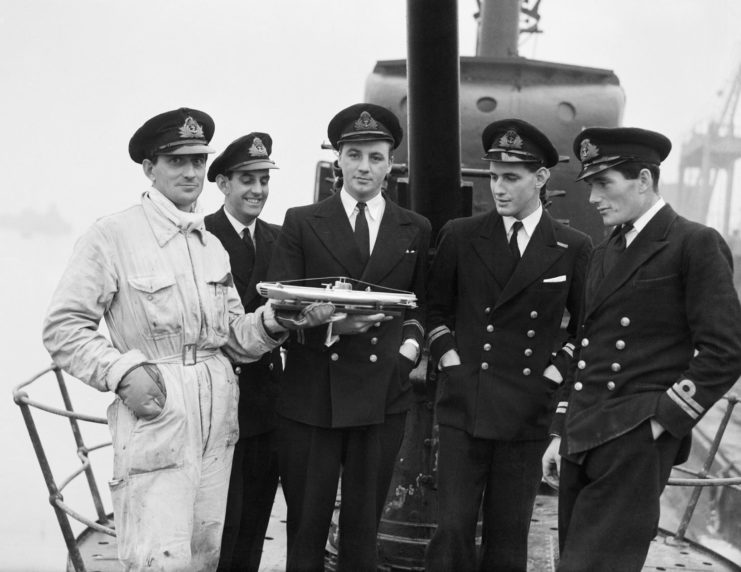
On April 30, 1943, Lt. Norman Jewell, captain of the HMS Seraph, read a passage from the Bible while Martin’s body was pushed into the sea. Everything went according to plan, and the body washed ashore, where it was found by a fisherman and identified as Maj. William Martin of the Royal Marines. It was buried with military honors in the city cemetery.
To make sure the documents in the briefcase were discovered and believed to be real, the British made a show of trying to get the case and its contents back. The tactic worked and the briefcase was covertly opened. Photos of the documents within were passed on to German Intelligence.
The Allied Invasion of Sicily: Operation Husky
Just 10 weeks after Maj. Martin’s body was discovered, the Allies launched their invasion of Sicily. Between 150,000 and 160,000 troops, with naval and aerial support, reached the Sicilian shores with 600 tanks to start the push into Europe. Their efforts forced the evacuation of roughly 62,000 Italian and 52,000 German troops.
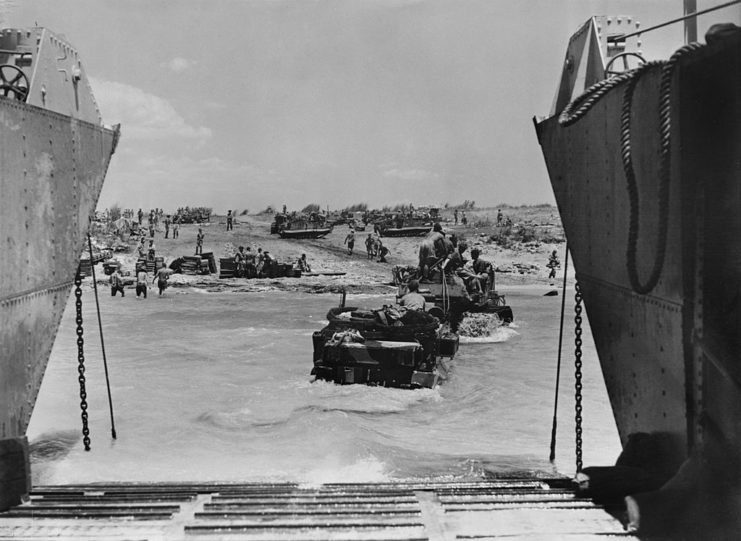
More from us: Project Underworld: The US Navy’s Unexpected Mafia Alliance
It’s difficult to know exactly how useful Operation Mincemeat was in relation to the Allied success in Sicily, but it certainly played a major role in catching the Axis forces unaware. The feint was so convincing that the Germans were completely unprepared, and many of their forces had been sent to defend the areas the British had claimed were targets.
Even two weeks into the invasion, the German high command thought that it was still a feint, waiting for the real attack to land elsewhere.
